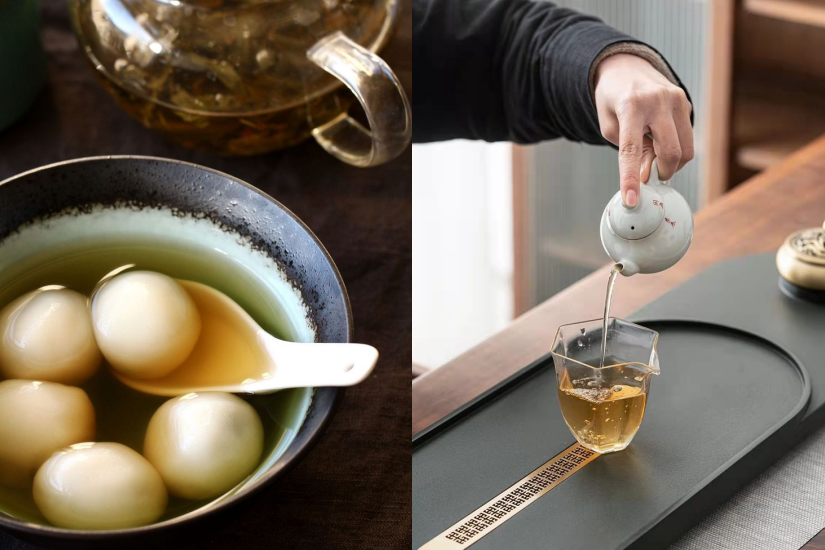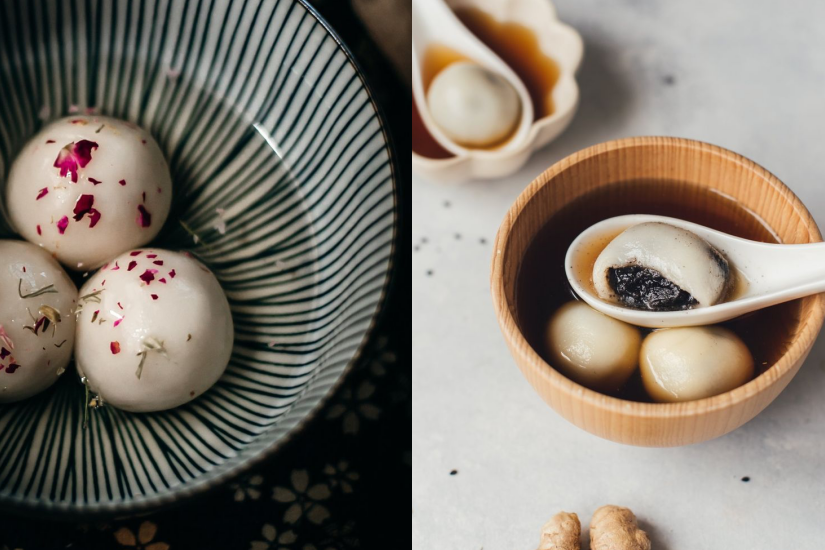Eating tangyuan symbolizes family reunions during the full moon. It is one of the most popular traditional Chinese desserts during festivals. In addition to the more traditional flavors like sesame and peanut, there are now many other different flavors available on the market. But did you know that eating three tangyuan is equivalent to a bowl of white rice? This time, we’ve invited certified nutritionist Huang Yan-Cheng to break down the calorie and fat content of various tangyuan, and to recommend a homemade low-calorie tangyuan recipe!
Comparison of Nutritional Components in Different Types of Tangyuan
| 湯圓口味 (每100克) | 熱量 (Kcal) | 糖分 (克) | 脂肪 (克) |
| 芝麻 | 334 | 6.6 | 22.1 |
| 花生 | 343 | 7.1 | 18.4 |
| 開心果 | 400 | 6.9 | 16.5 |
| 豆沙 | 241 | 12.7 | 8.4 |
| 奶黃 | 214 | 3.5 | 5.1 |
| 流沙奶黃 | 263 | 9.5 | 8.4 |
Making Tangyuan
Most tangyuan have a skin made from glutinous rice flour, giving them a soft and elastic texture. Sometimes manufacturers also add thickeners and oil to adjust the mouthfeel of the tangyuan skin. Sesame, peanut, and pistachio are all types of nut seeds, and they tend to have a higher fat content.

Although the fats in nuts are healthier unsaturated fats, they are also a reason for their higher calorie content. In contrast, when making fillings for custard and red bean soup dumplings, a larger amount of sugar is added to adjust the texture and flavor, so the sugar content is relatively higher compared to nut dumplings, but the fat content is lower.

Recommended Portions and Tips for Digestion
The size of the tangyuan sold in the market varies little, and consuming 3 to 4 tangyuan is equivalent to the calories in one bowl of rice. Therefore, it is recommended to limit daily consumption to less than 4 tangyuan and adjust the portions of other meals accordingly. If the filling of the tangyuan is particularly rich and creamy, it may contain more added oils, and since glutinous rice flour is inherently harder to digest, it’s advisable to drink some green tea, pu-erh tea, or oolong tea after eating tangyuan to aid digestion. In addition to tea, you can also pair tangyuan with enzyme-rich fruits like papaya, pineapple, or kiwi, which help with digestion.

If you want to make healthier tangyuan, you can use some healthier fillings, such as purple sweet potato, sweet potato, or fruit puree. Additionally, for individuals with weaker digestion, you can substitute sago for glutinous rice, or mix glutinous rice with pumpkin puree or sweet potato puree to reduce the amount of glutinous rice flour used and lighten the burden.
Homemade Low-Calorie Tangyuan Recipe
| 湯圓食譜 | 材料 | 做法 |
西米水果湯圓 | 西米 100克 火龍果 1 個 水 500 ml 冰糖 2 片 | 1.西米浸泡在溫水 30 分鐘。 2.火龍果切細,放入攪拌機,打成果泥。 3.果泥過濾,然後倒入鑊中熬煮至水分蒸發。 4.果泥倒入細圓型模具,冷凍至少 1 日。 5.泡好的西米,按壓成麵團。 6.將冷凍好的果泥球包在西米的麵團中。 7.把冰糖倒進清水煮滾。 8.最後放入已搓成的湯圓大火煮 20 分鐘,然後熄火燜煮 5 分鐘即可。 |
Learn more: Huang Yan Cheng Joey – Accredited Dietitian (Hong Kong Dietitians Association)
Dietitian at the Home Nutrition Center, skilled in listening and understanding clients’ feelings, thereby designing delicious and diverse meal plans tailored to the clients’ needs, integrating the meal plans into their lifestyles.


